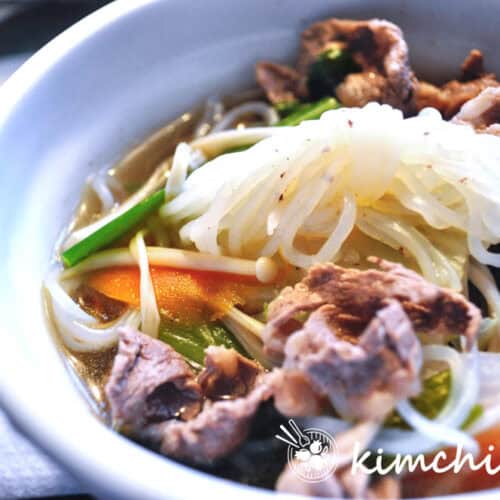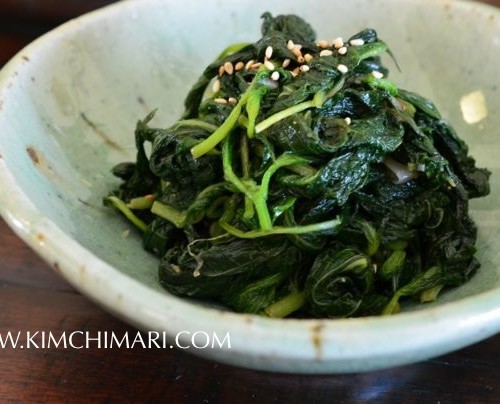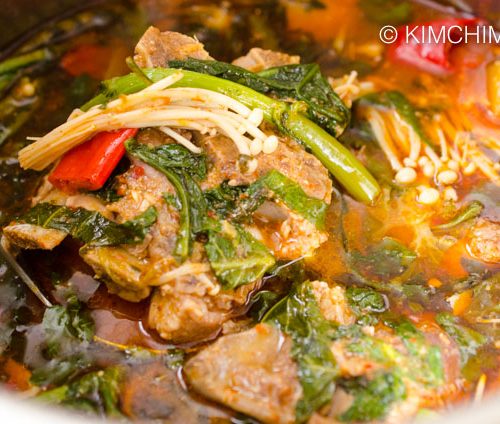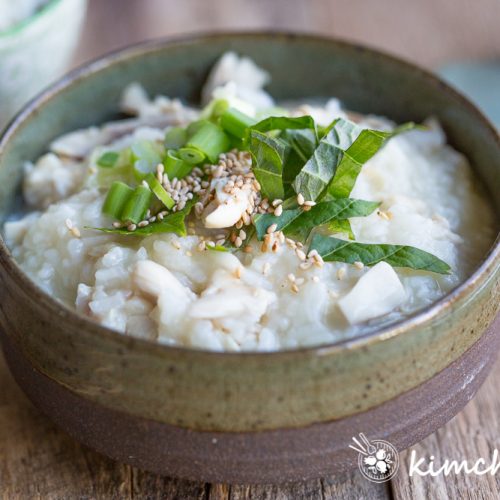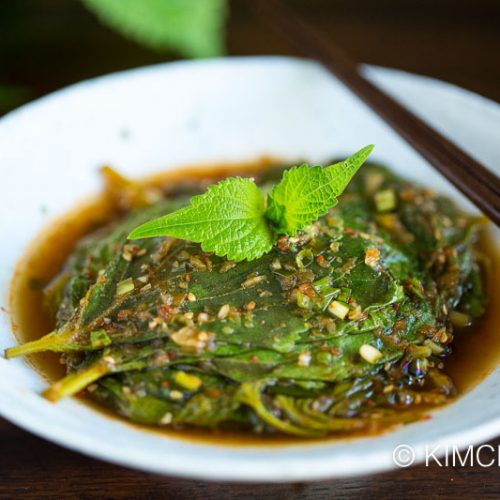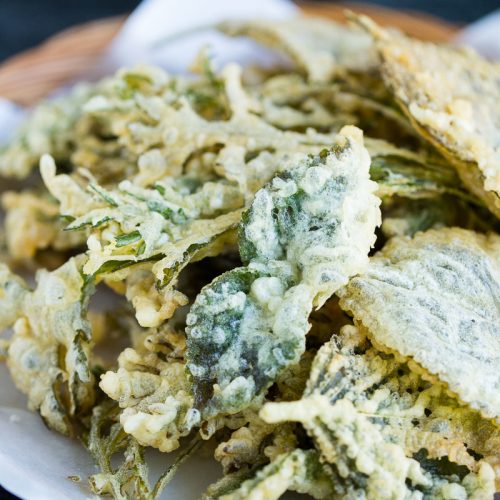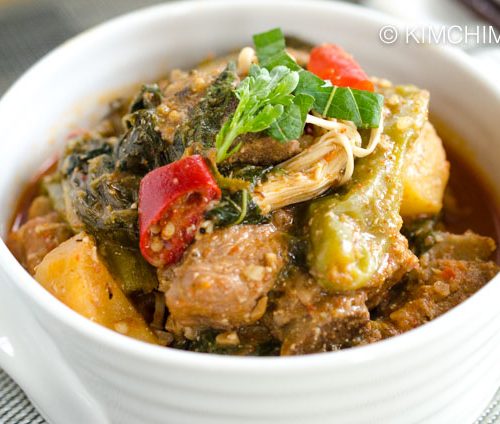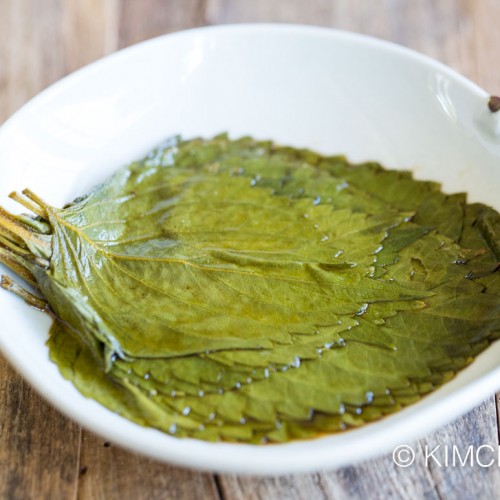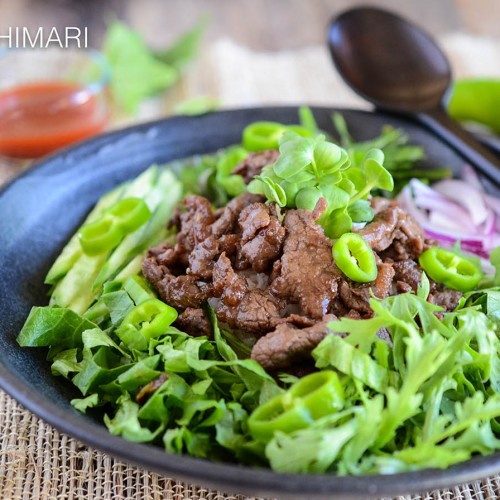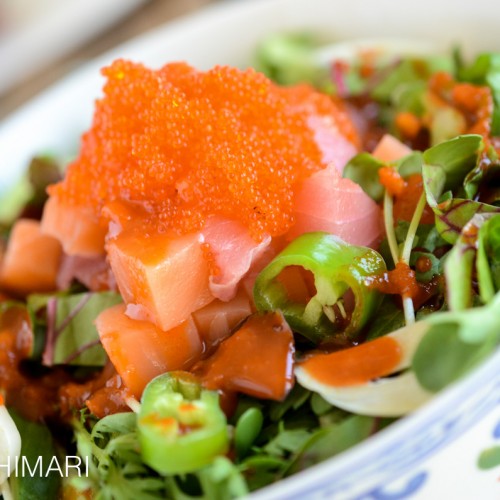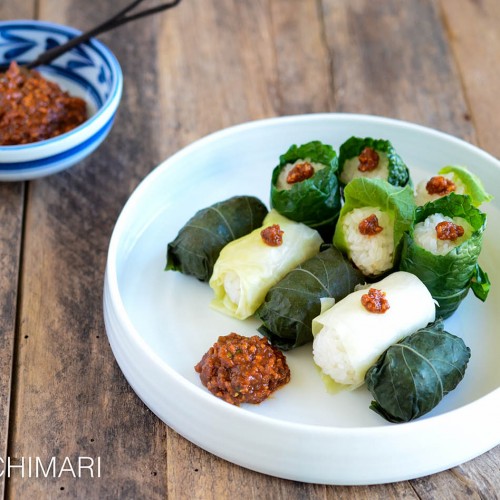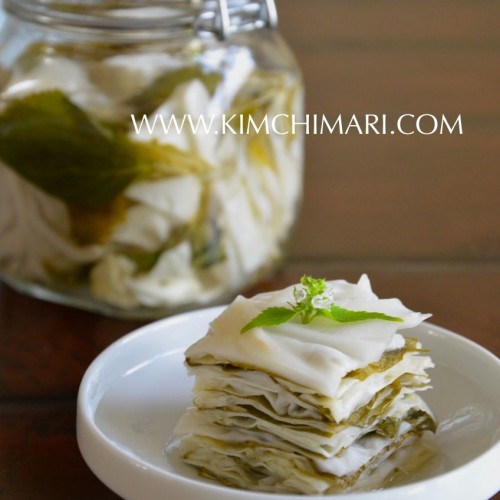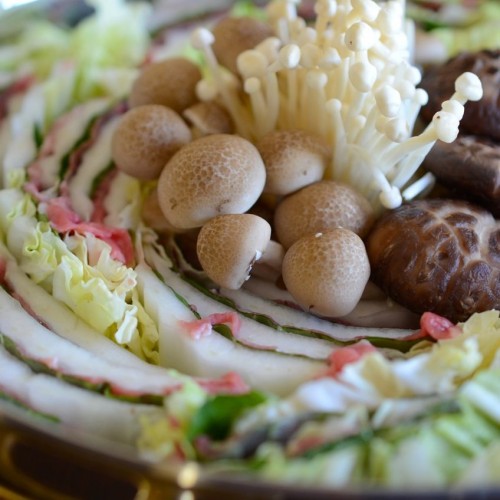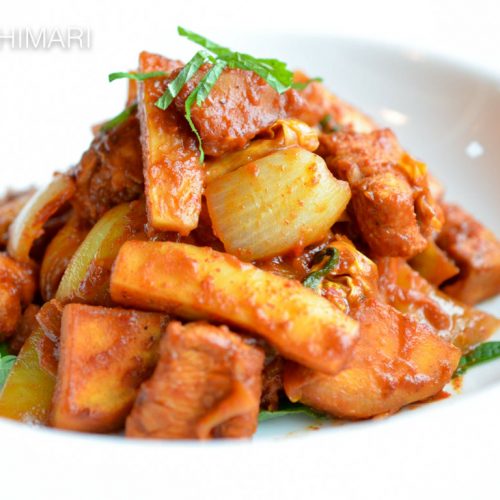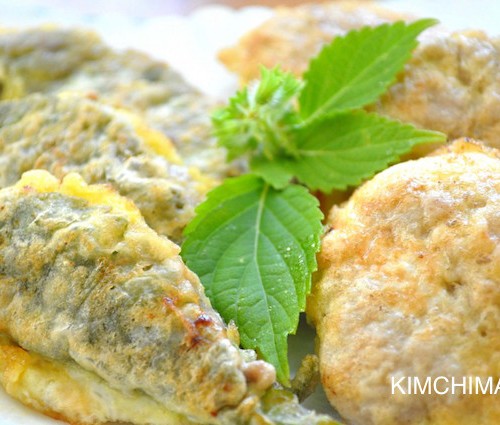What are Perilla Leaves (Kkaennip) ?

Perilla leaves (Kkaennip 깻잎) are the leaves of the Perilla Seed plant that is native to Asia and is part of the mint family. They are often referred to as sesame leaves as it is the direct Korean translation of 깨 = sesame and 잎 = leaves. However, they have no connection to the actual sesame plant and is incorrect.
Kkaennip is an aromatic herb very much like basil but in Korean cuisine, it's also used as a vegetable. This is why it is also called Chinese Korean basil and is used by modern Korean chefs to make perilla-pesto. It can be eaten fresh, pickled or cooked.
They are 2 kinds of Perilla leaves - ones that have a purplish underside and ones that do not. The leaves both have serrated edges and have a slightly fuzzy texture on the top green side.
Not To Be Confused With
Shiso (P. frutescens var. crispa), Japanese Basil, sesame leaves (misnomer) Tia-to(Vietnam), Shiso(Japan)
Although Shiso is similar the fragrance is quite different so please don't try to substitute Shiso in Korean cooking.
Where and What To Buy
Korean and Asian grocery stores, some specialty grocery stores. You can also buy Perilla seeds online on Amazon or from Kitazawa seed and other online specialty seed companies.
Most of the time, the leaves will come stacked and packed in a clear plastic bag.
Sometimes, you will find a big bunch of perilla leaves and stems that are meant to be cooked and eaten as namul. (like the
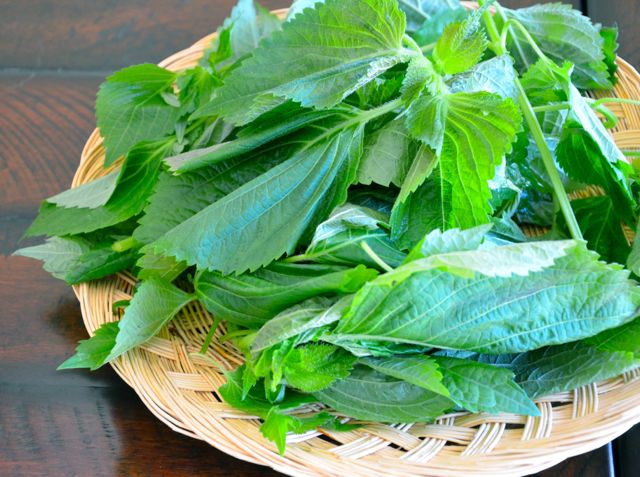
pic above).
How to Use/Cook
Perilla leaves are used in many ways in Korean cuisine.
Used fresh - as ssam (lettuce wrap), as a garnish for stir frys like Osam Bulgogi, for Dakjuk (chicken porridge), on HoeDeopbap (Sashimi Rice Bowl) and stews (e.g. Gamjatang). When used as a garnish, it is usually julienned and added.
Pickled - as Kkaennip Jangahjji side dish
Cooked - in Mille Feuille Shabu Shabu, as Kkaennip Namul side dish,
Some modern Korean chefs make perilla-pesto and it works wonderfully.
How to Clean/Store
Pickled perilla leaves will stay fresh for at least a week if kept in an airtight container or it will keep fresh even longer if you keep it in a container but keep the top open and cover with a wet paper towel without it touching the leaves. The only thing is, you will have to re-wet the paper towel regularly to keep it from drying out.
You can also freshen old wilted leaves by re-cutting the stems and letting it soak in water for a couple of hours.
How To Grow
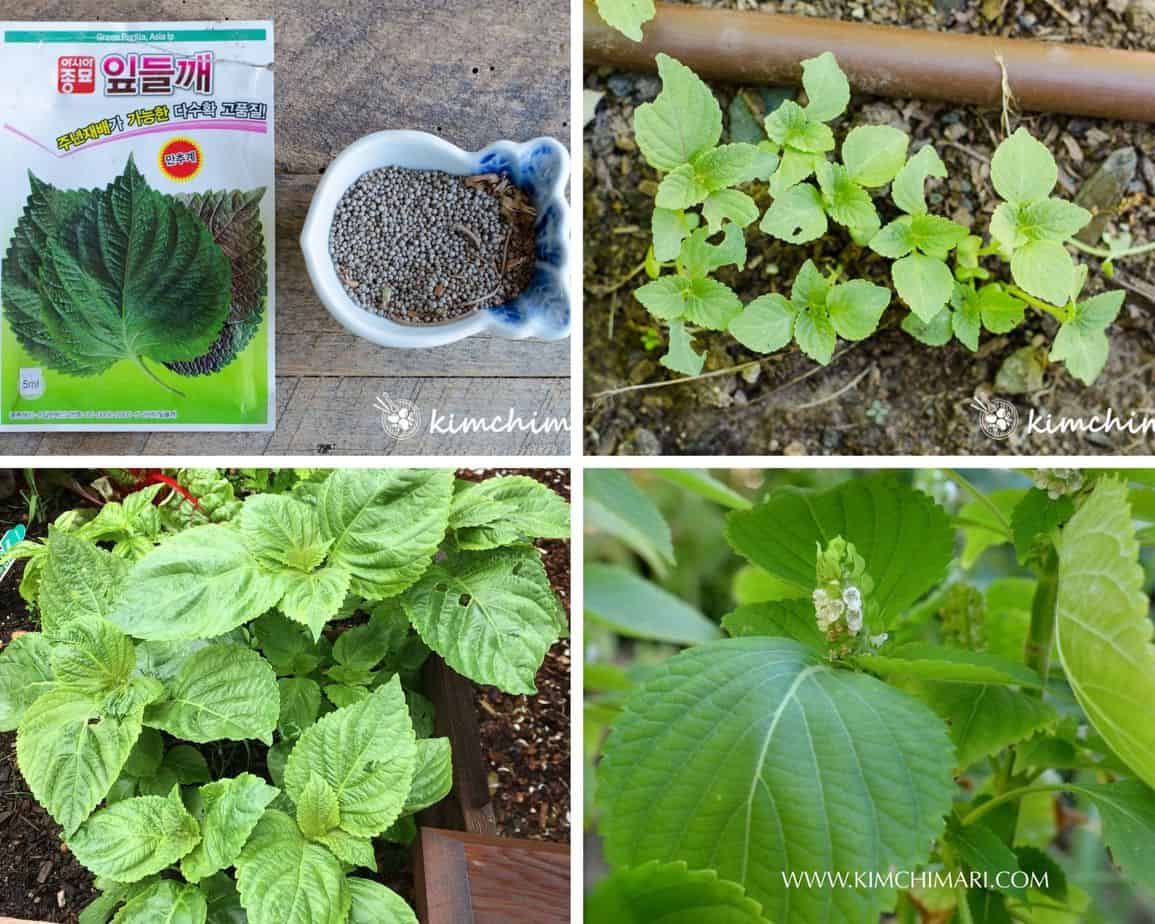
Perilla is a perennial plant that's very easy to grow and is self-seeding so it will grow like a weed. In fact, it is classified as a weed in some regions. They can also be grown in pots.
You can read more about how to grow this plant in my 9 Korean Vegetables to Grow post.
Nutrition/Health Info
Perilla leaves are high in calcium and iron - a 100g serving contains 23 % of the daily suggested calcium and 9 % of the daily suggested iron. It's also high in vitamins A, C and Riboflavin with vitamin C having 43% of daily amount in a 100g serving.
Recipes that use it:
Sauteed Perilla Side Dish (Kkaennip Namul) – Green Color Namul
Instant Pot Gamjatang (Korean Spicy Pork Bone Stew)
DakJuk (Korean Chicken Rice Porridge) – Regular and Instant Pot
How to make Acorn Jelly (Dotorimuk 도토리묵)
Steamed Perilla Leaves (Kkaennip Jjim)
Vegetable Tempura
Gamjatang (Spicy Pork Bone Stew with Potatoes)
Perilla Leaves Pickled in Tangy Soy Sauce (Kkaetnip Jangajji)
Bulgogi Rice Bowl with Gochujang
Korean Rice Bowl with Sashimi – Hoedeopbap
3 Easy Ssam and Ssambap recipes
Korean Perilla Cabbage Pickle (Kkaetnip Yangbaechoo Chojeolim)
Easy and Pretty Mille-Feuille Nabe (Shabu Shabu)
Dakgalbi (Korean Spicy Chicken Stir-Fry)
Pan-Fried Beef Patties (Wanja Jeon) and Stuffed Perilla Leaves (Kkaennip Jeon)
References:
https://www.livestrong.com/article/458097-nutritional-content-of-perilla-leaves/
